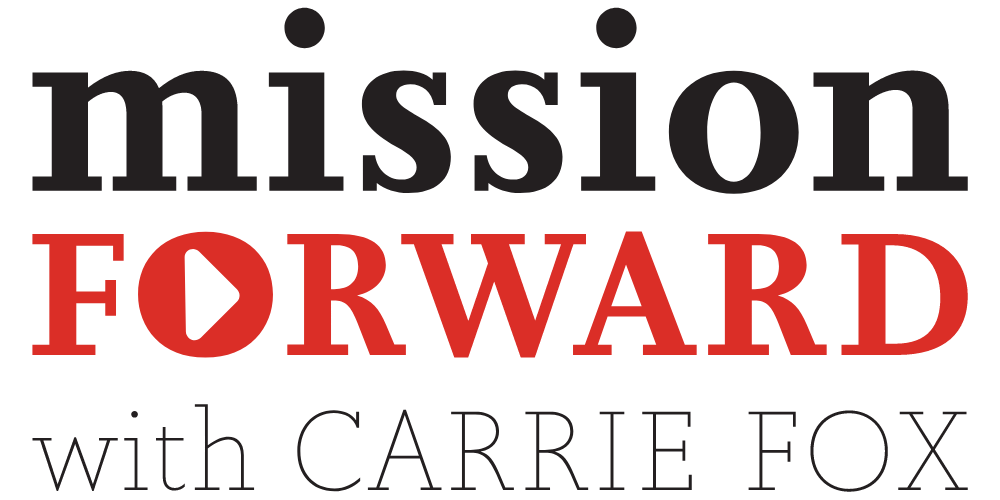A Better Roadmap • Finding the Words
About This Episode
Whether we’re planning a road trip or a change of course in our organization’s strategy, the clearer the roadmap, the better the outcome.
This is week 3, in the second year, of the Finding The Words column, a series published every Wednesday that delivers a dose of communication insights direct to your inbox. If you like what you read, we hope you’ll subscribe to ensure you receive this each week.
Like this episode? Read this article in our weekly Finding the Words column.
-
My first road trip did not go well. I was 17 and taking a day trip to the beach with my best friend. We’d never driven this trip alone before, and without the invention of cellphones, Google maps, or GPS to guide us, we relied on our trusty paper roadmaps to guide us to the destination. Heading into our adventure, we mapped out the route, grabbed the coins we’d need for the toll booths, and set out early for our two-hour trip, with a plan to arrive well before noon. But an hour in, we started seeing signs for Buffalo instead of the beach. Before I knew it, I was scrounging around on the floorboards to find the spare change needed to get us back through those toll booths (going south this time) and back on track.
I don’t know which was stronger that day: our laughter or my red cheeks of embarrassment.
All these years later, though, the lesson still holds true: Whether we’re planning a road trip or a change of course in our organization’s strategy, the clearer the roadmap, the better the outcome.
Yet, many of us get through our days without that clear roadmap at hand. I’ve heard from dozens of organizations in recent years about the challenges of moving from strategic plan approval to successful implementation. In many cases, after only a few months, those Board-approved visionary plans start to falter. Not because the plan was a bad one, but because it’s common to struggle with prioritizing long-term goals among a flood of short-term tasks.
To help teams get aligned and moving forward, we developed a tool called the Executive Roadmap. The tool turns a 40-page strategic plan into a one-page visual illustration, inclusive of plan goals, key audiences and key actions. Initially developed as a tool to guide executives in presenting a new strategy to their Board members, the document also includes a literal roadmap for a timebound portion of the strategy so all stakeholders know exactly what the priorities are in any given phase of the plan.
Since developing the tool, we’ve implemented it for nearly all of our clients and each time we get a similar reaction: “How helpful it is to see the roadmap right in front of us, with a clear path on how we’re going to take on this big, unwieldy plan.”
Moving from complexity to simplicity is an important factor in moving a big idea forward. When we know what needs to be done, by when, and with whom, that daunting trip from here to there starts to feel more manageable. You can start to feel in control of the plan, rather than the plan controlling you.
If you’re just setting out on a new strategy, here are a few key tips that can guide you along the path as well:
* Know where you’re going and how you’ll know when you arrive. This may sound simple but shouldn’t be taken for granted. For example, if your plan has your organization becoming a national thought leader, expanding to new markets, or engaging a new audience base, the outcomes of those actions can look many different ways. Take the time to visualize exactly what success can look like, and how you’ll know when you’ve achieved your goal. As you consider these success metrics, be mindful of intended and unintended consequences to ensure that advancing one goal doesn’t inhibit progress on another front.
* Take it in pieces. If you’re running after a 10-year goal without annual targets, you’re likely to lose your way. At Mission Partners, we employ the process of identifying achievable “rocks” along the mountain climb. So, if our goal is to move $2.5M to Black and women-led organizations by 2025 (which ours is) we think about what needs to happen within every year to make that goal achievable by our 2025 deadline.
* Right people, right seats. Just like you wouldn’t rely on one driver to get you through a cross-country road trip, you shouldn’t rely on only one person to sit in the driver’s seat of your plan. Consider the people who will be shepherding the various elements of this plan, and how each of you will float between serving as the driver and the passenger throughout the plan’s implementation. This is a great way to ensure that you’re fostering collaboration between people and teams and sharing ownership along the way.
Bottom line: At the end of the day, a clear and simple roadmap can do wonders to move big ideas forward. Start by simplifying your plan, and if you need a good guide, you know where to find me. We’ll head in the right direction together.

